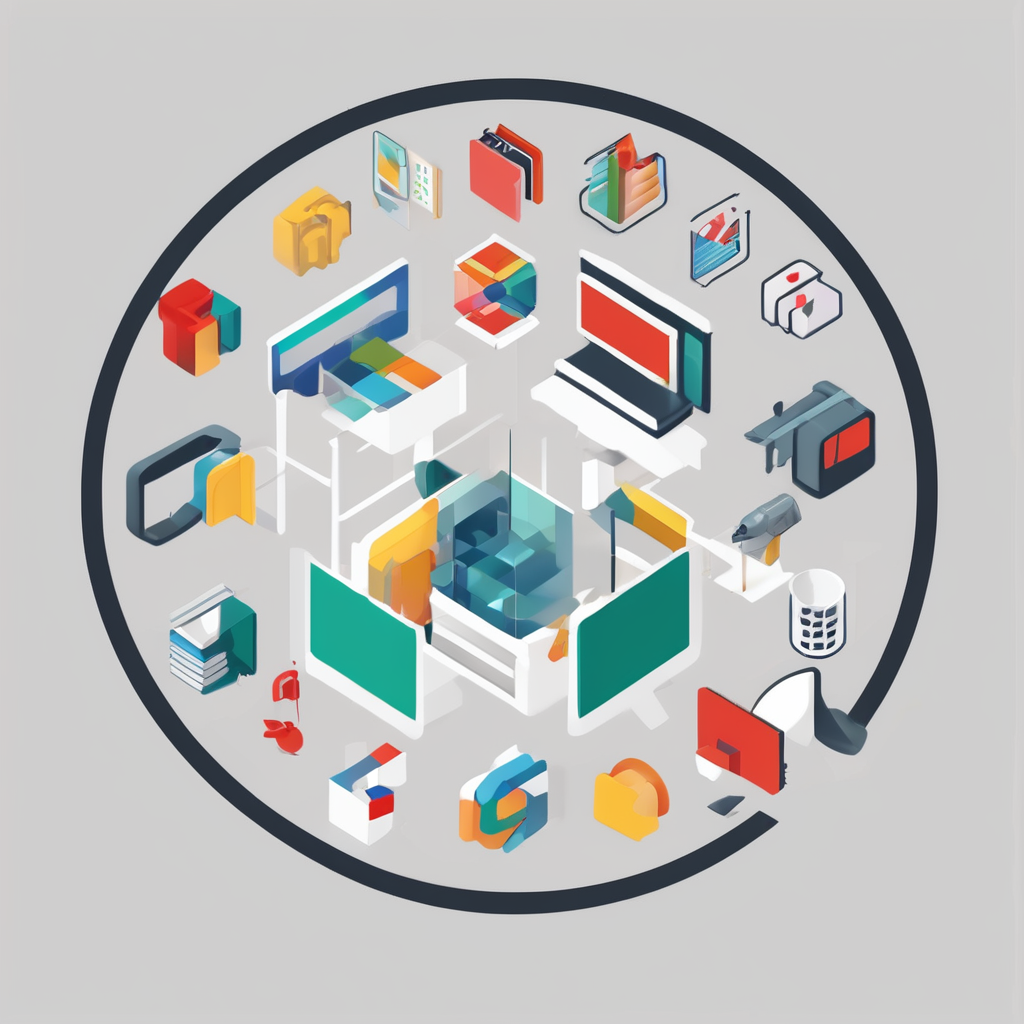Unveiling the Impact of UK Laws on Mobile App Telehealth Data: A Comprehensive Exploration
In the era of digital transformation, the healthcare sector has seen a significant shift towards telehealth services, particularly through mobile applications. The UK, with its robust legislative framework, plays a crucial role in shaping how these services are delivered, used, and regulated. This article delves into the impact of UK laws on mobile app telehealth data, exploring the intricacies of compliance, challenges, and best practices.
Understanding UK Legislation and Telehealth
UK legislation, including the Data Protection Act 2018 and the UK General Data Protection Regulation (UK GDPR), sets stringent standards for the handling of personal data, including health information. These laws are pivotal in ensuring that telehealth services maintain the highest levels of data protection and patient privacy.
Additional reading : Crucial Tips for UK Businesses to Secure Data Protection in IT Outsourcing;204Mastering Intellectual Property: The Ultimate Legal Guide for UK Enterprises to Protect Innovative Inventions
Key Legislative Frameworks
- Data Protection Act 2018: This act enforces the principles of data protection, mandating that personal data, including health information, be processed lawfully, fairly, and transparently.
- UK GDPR: Although the UK has left the EU, the UK GDPR continues to apply, emphasizing the need for explicit consent, data minimization, and robust security measures.
- NHS Digital Guidelines: The National Health Service (NHS) provides specific guidelines for digital health services, ensuring that all telehealth apps comply with NHS standards for data security and patient confidentiality[4].
Compliance and Data Protection in Telehealth Apps
Compliance with UK laws is non-negotiable for telehealth app developers. Here are some critical aspects to consider:
Data Security
Telehealth apps must ensure the security of patient data through various measures:
Also to discover : Mastering legal compliance: a guide for uk businesses harnessing machine learning in data analytics
- Encryption: End-to-end encryption is essential to protect data both in transit and at rest.
- Secure Data Storage: Using HIPAA-compliant data storage platforms like Amazon Web Services (AWS) is highly recommended.
- Access Controls: Implementing robust access controls, including multi-factor authentication, is crucial to prevent unauthorized access[2].
Privacy and Consent
- Informed Consent: Patients must provide explicit consent before their data is collected or shared.
- Transparency: Telehealth apps must be transparent about how data is collected, used, and shared. Clear privacy policies and terms of service are essential.
- Data Minimization: Only the minimum necessary data should be collected to fulfill the purpose of the telehealth service.
Example: Babylon Health App
The Babylon Health app, a UK-based telehealth service, exemplifies compliance with UK laws. It is regulated by the Care Quality Commission and provides clear guidelines on data protection and privacy. Users can access health risk factors and build health profiles securely, highlighting the app’s commitment to data security and transparency[2].
Challenges Faced by Telehealth App Developers
Developing a telehealth app that complies with UK laws is not without its challenges.
Data Security Concerns
One of the prime concerns is ensuring the security of patients’ health records and personal information. Here are some challenges:
- Complexity of Backend Integration: Integrating backend systems to ensure seamless data flow between patients and healthcare providers is more complex than in other types of apps.
- User Interface and Experience: Telehealth apps need to cater to both patients and healthcare providers, requiring separate interfaces and content, which can be time-consuming to develop[2].
Digital Inequalities and Access Barriers
The digitalization of healthcare services can exacerbate existing health inequalities, particularly among minoritised ethnic communities.
- Language Barriers: Many GP platforms and apps are only available in English, creating a significant barrier for those who do not speak English fluently.
- Digital Poverty: Limited access to smartphones and internet connectivity can hinder the use of telehealth services. For instance, a participant in a study mentioned, “When I feel that I need an appointment from the doctor, then we’ll recharge immediately for one month … I bought the cheapest one for £6 per month. It’s only for calling, and the data is very limited.”[3]
Best Practices for Telehealth App Development
To navigate the complexities of UK laws and ensure successful telehealth app development, here are some best practices:
Secure Communication Channels
- End-to-End Encryption: Use encryption to protect data during transmission and storage.
- HIPAA-Compliant Features: Integrate features that comply with HIPAA standards, such as secure data storage and reliable access controls[1].
Training and Documentation
- Staff Training: Ensure that all staff members are trained on proper protocols for handling patient data.
- Documentation: Regularly document call procedures and data access activities to maintain transparency and compliance.
User-Centric Design
- Accessibility: Design apps that are accessible to a wide range of users, including those with limited digital literacy.
- Feedback Mechanisms: Implement feedback mechanisms to continuously improve the app based on user experiences.
Practical Insights and Actionable Advice
For healthcare professionals and developers looking to launch telehealth services, here are some practical insights:
Conduct Thorough Risk Assessments
Before launching a telehealth app, conduct thorough risk assessments to identify potential vulnerabilities in data security and privacy.
Engage with Users
Engage with service users to understand their needs and challenges. This can help in designing more user-friendly and accessible telehealth services.
Stay Updated with Legislation
Regularly update your knowledge on UK legislation and guidelines related to telehealth. This ensures that your app remains compliant with the latest regulations.
Table: Comparison of Key UK Laws and Guidelines for Telehealth
| Legislation/Guideline | Key Provisions | Impact on Telehealth |
|---|---|---|
| Data Protection Act 2018 | Principles of data protection, lawful processing, consent | Ensures telehealth apps process health data lawfully and transparently |
| UK GDPR | Data minimization, explicit consent, security measures | Mandates robust security and transparency in data handling |
| NHS Digital Guidelines | Data security standards, patient confidentiality | Ensures NHS-compliant telehealth apps maintain high data security and confidentiality |
| Care Quality Commission Regulations | Quality and safety standards for healthcare services | Regulates telehealth services to ensure they meet quality and safety standards |
Quotes and Anecdotes
- “When I feel that I need an appointment from the doctor, then we’ll recharge immediately for one month … I bought the cheapest one for £6 per month. It’s only for calling, and the data is very limited.” – Indian Female, 27, highlighting the issue of digital poverty[3].
- “I need an interpreter … I can use one of my friends or my next door [neighbour] as my interpreter … Without the help of an interpreter, I can’t explain my health issues.” – Bangladeshi Female, 70, emphasizing the challenge of language barriers[3].
The impact of UK laws on mobile app telehealth data is profound, ensuring that these services are delivered with the utmost care for patient privacy and data security. By understanding and complying with these laws, telehealth app developers can create secure, accessible, and user-friendly services that enhance healthcare delivery.
Key Takeaways
- Compliance is Key: Ensure your telehealth app complies with UK laws such as the Data Protection Act 2018 and UK GDPR.
- User-Centric Design: Design apps that are accessible and user-friendly, addressing the needs of diverse user groups.
- Continuous Improvement: Regularly update your app based on user feedback and legislative changes.
In the digital health landscape, balancing innovation with compliance is crucial. By following best practices and staying informed about UK legislation, healthcare providers and developers can leverage telehealth services to improve patient care while protecting sensitive health information.











